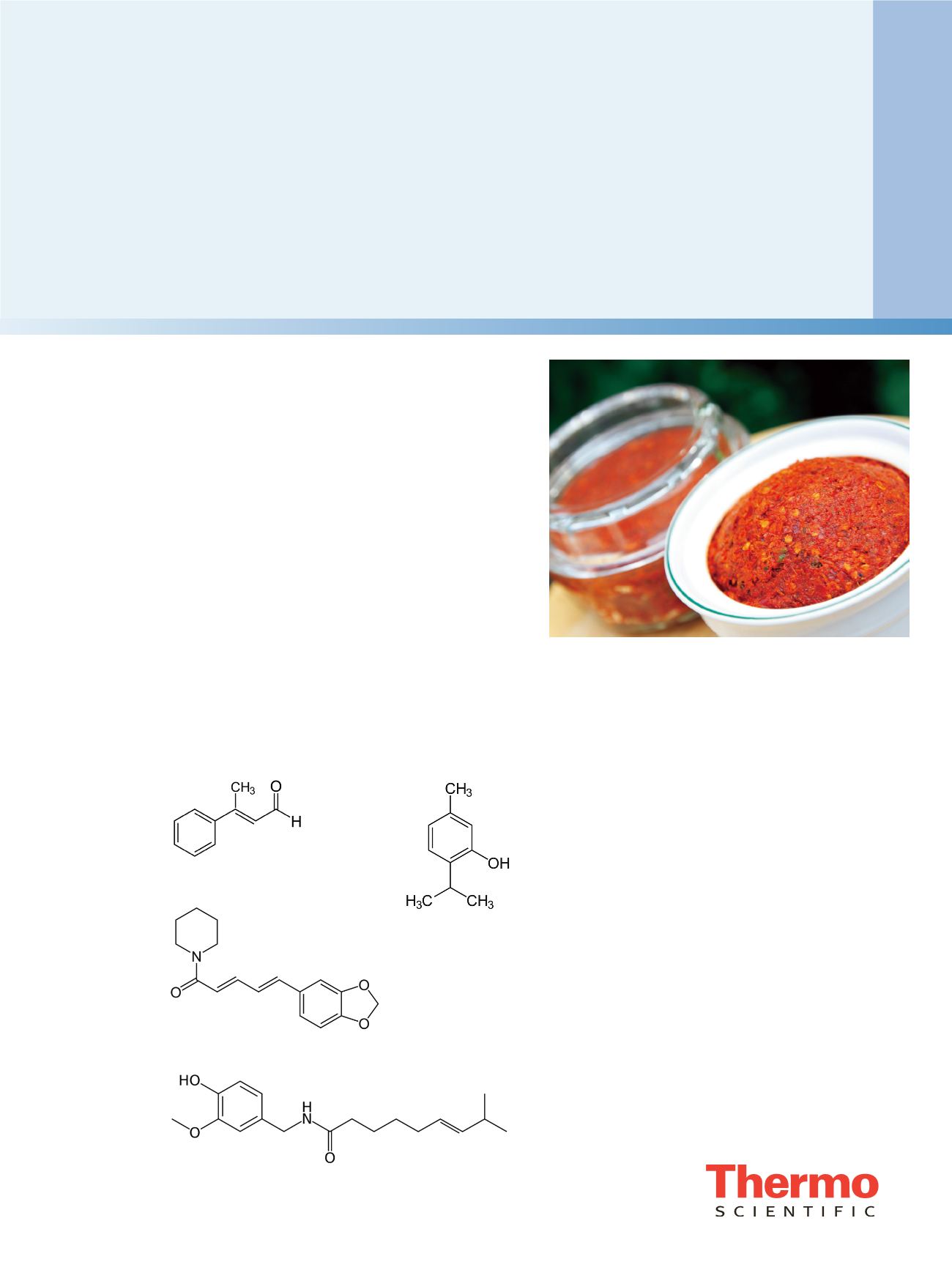
Technical Support Note-000
GC-MS/MS Analysis of the Receptor-
Sensitizing Natural Active Spice Ingredients
Capsaicin, Piperine, and Thymol
Alex Chen
1
, Hans-Joachim Huebschmann
2
1
Alpha Analytical Pte. Ltd., Singapore,
2
Thermo Fisher Scientific, Singapore
can be caused by a number of compounds of natural
origin that, along with many others, include capsaicinoids,
piperine, and thymol.
Capsaicin (CAS 404-86-4) and related capsaicinoid
compounds like dihydrocapsaicin (CAS 19408-84-5)
occur in plants from the genus Capsicum and are typical
of hot (chili) and non-pungent (bell) peppers. Due to
its stimulating characteristics, capsaicin is a banned
substance in equestrian sports. Piperine (CAS 94-62-2)
belongs to a group of alkaloids typical of plants from
the Piperaceae family, like black pepper (Piper nigrum
L.), a most popular spice. Thymol (CAS 89-83-8) is a
naturally occurring monoterpene phenol from Thymus
vulgaris, known for its distinctive, strong flavor. Due to
its antimicrobial attributes it is also used as an antiseptic
ingredient in household products. Trans-cinnamaldehyde
(CAS 104-55-2) occurs naturally in the bark of cinnamon
trees and other species of the genus Cinnamomum
and gives the cinnamon powder its typical flavor and
odor. The best known application for cinnamaldehyde
is flavoring, but it is also used as a fungicide and an
antimicrobial
[3]
. It is included here as it is known to be
used in pepper spray products as a flavoring component.
Introduction
Pungent spices are common ingredients for food
preparations in all cooking traditions. Spices have been
used as well for a long time in the traditional Chinese
medicine (TCM). Beyond that there is a modern use of the
active ingredients of spices in a variety of personal defense
and law enforcement products, such as pepper spray, due
to their immediate physiological irritation effects.
Many of these active ingredients interact with specific
receptors and modulate the sensing mechanism of the
human body
[1]
. Such receptors can respond to chemical
stimuli caused by a variety of natural and synthetic
compounds. Upon receptor activation the nerve signal is
interpreted as a painful burning, a sensation consumers of
hot dishes recognize
[2]
. Receptor sensitizing and activation
Application No e 10355
Keywords:
Spices, active ingredients, traditional Chinese medicine TCM,
medical applications, personal defense products, pepper spray, MRM,
analyte protectants.
fungicides, DTCs, hydrolysis, Thiram, -
α
-Methyl-t-Cinnamaldehyde
Thymol
Capsaicin
Piperine


